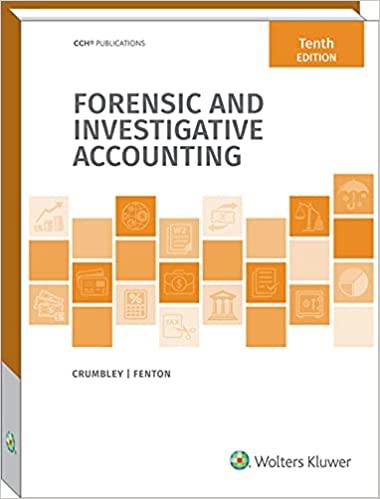

Accounting
. Information contained in the nancial statements is useil to the a. Owners of the rm only b. Creditors and customers of the rm only c. Owners of the firm, creditors and customers of the rms only (1. None of the above . The income statement provides information about a. The results of the business operation b. The resources acquired by the firm, including where the resources come from c. The functioning of the accounting system d. None of the above . The statement of changes in equity 3. Has no relationship with the balance sheet b. Indicates whether the cash position of the entity will permit withdrawals by the owner c. Provides link between the income statement and the balance sheet (1. None of the above . What nancial statements are prepared as of the end of the accounting period 3. Income statement only b. Balance sheet and Statement of Owner's Equity only c. Income Statement, Balance Sheet, and Statement of Owner's Capital (1. None of the above . Which of the following items would not have any effect on the income statement 3. Revenue from service rendered b. Salary Expense c. Drawings made by the owner (:1. None of the above . Revenues are a. The using up of the rm's assets b. A special kind of growth in the rm's assets c. A special kind of decrease in the rm's assets (1. None of the above . The normal reporting practice in the balance sheet for an asset such as delivery equipment is to a. Subtract the accumulated denreciatinn 'n'm the cost nfasset .II Globe '6' 9:36 pM {a} 28% ED 8 cdn.fbsbx.com II. Direction classify each account listed below as assets (A), liabilities (L), owner's equity (OE), revenue (R), or expenses (E). Indicate the normal debit or credit balance of each account. Indicate whether each account will appear in the Income Statement (I), Statement of Owner's Equity (NA), or Balance Sheet (B). Account Classication Normal Balance Income Statement, Owner's Equity, or Balanace Sheet EXAMPLE: RENT EXPENSE E DEBIT I 1. Cash on Hand 2. Accounts Payable 3. Service fees earned 4. Account Receivable 5. Prepaid Insurance 6. Uneamed service fees 7. Interest Income 8. Land 9. Accumulated Depreciation - building 10. Bad Debts 11. Office Supplies used 12. Depreciation building 13. Valdez, capital 14. Valdez, drawing 15. Accrued salaries 16. Cash in bank 17. Allowance for Bad debts 18. Ofce supplies on hand 19. Building 20. Notes Receivable III. Explain the following: 1. Temporary Accounts and Permanent Accounts. 2. Accrual basis of accounting 3. Objective of Financial Statements 4. What useful information do the income statement and balance sheet provide to business owner? 7. The normal reporting practice in the balance sheet for an asset such as delivery equipment is to a. Subtract the accumulated depreciation from the cost of asset b. Add the accumulated depreciation to the cost of the asset 0. Report only the cost of the asset d. None of the above 8. The sources of asset presented on a balance sheet are a. Capital only b. Liabilities only c. Liabilities and capital (1. None of the above 9. Preparation of nancial statements will be made easier with the aid of a a. Trial balance b. Worksheet 0. Ledger (1. None of the above 10. The balance sheet can be presented in a. Account form b. Report form 0. Either a or b (1. None of the above











